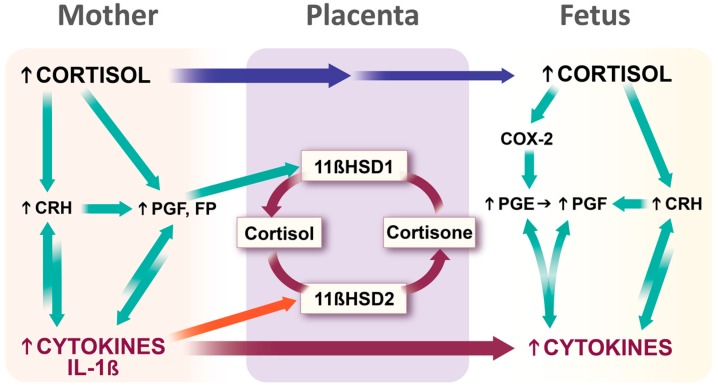Figure 4.
Role of placenta in transmission of generational stressors from mother to fetus. Increased fetal cortisol can be derived from elevated maternal cortisol concentrations via a high concentration gradient plus maternal cortisol-induced stimulation of corticotrophin releasing hormone (CRH) and prostaglandins (PGs) in placenta and fetal membranes. PGF2α in turn stimulates 11β-hydroxysteroid dehydrogenase type 1 (11βHSD1) that converts the less biologically active cortisone to cortisol. Further, CRH and PGF2α can stimulate cytokine production, and in turn cytokines stimulate CRH and PGF production. Several cytokines, including IL-1β, inhibit the enzyme, 11βHSD2, which converts cortisol to cortisone, thereby decreasing the metabolism of cortisol. The net effect of increased activity of 11βHSD1 and decreased 11βHSD2 activity is an increased cortisol gradient and reduced metabolism leading to higher concentrations of fetal cortisol. Maternal cytokines can stimulate the production of fetal cytokines directly through cytokine stimulation and indirectly through CRH and PGF2α. Increased cortisol and cytokines in the fetal compartment amplify the production of more fetal cytokines, PGs and CRH and permit more cortisol to cross the placenta thereby increasing fetal circulating cortisol concentrations. Legend: Green arrows stimulatory; red curved arrows inhibitory, straight maroon and blue arrows passage through placenta.

